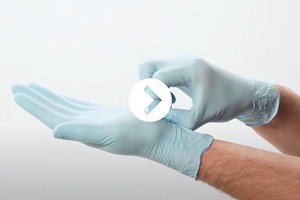Laboratory personnel require gloves that protect
The selection of gloves for use in the laboratory is increasingly important. There is a growing understanding among laboratory managers, laboratory personnel and health and safety managers of the different ways gloves can impact laboratory activity. Requirements for demonstrating compliance with both Health & Safety Legislation and Good Laboratory Practices (GLPs) in Europe and with OSHA in the U.S. require more stringent justification of laboratory glove selection.1
During this PANDEMIC, laboratory personnel need quality gloves that protects them for the task at hand.
|
To comply with health and safety recommendations during this pandemic, laboratories must assess the type and level of risk personnel may be exposed to, and according to this, select a glove with the appropriate level of quality AQL < 1, certification and performance with respect to established recommendations by their respective countries.3,4 While storing, transporting, or handling COVID-19 samples, consider a glove with EN ISO 374-5 VIRUS designation for protection against penetration by viruses, bacteria, or fungi. Further test data such as ISO 16604:2004 and ASTM F1671-97b (Standard Test Method for Resistance of Materials Used in Protective Clothing to Penetration by Blood-borne Pathogens using Phi-X174 Bacteriophage Penetration as a Test System) demonstrate a glove’s appropriateness for use with viruses. When handling and testing COVID-19 samples, double donning gloves is an added precaution that can be used to mitigate penetration risks from viruses. |
Learn more about Interim Infection Prevention and Control:
When selecting a glove, take into consideration that gloves made from the same material from different manufacturers will not necessarily provide the same level of protection. The thickness, density, elasticity, and quality and type of material can affect the glove’s COVID-19 protection properties. These attributes can be modified in the formulation and manufacturing process, which can differ across different brands of gloves. One must refer to the test data and certification for the specific glove being considered, and not simply rely on its material type to make a choice.
Ansell offers a range of latex-free, sterile and non-sterile, accelerator-free, double-donnable gloves, available in different colors, thicknesses and ergonomically certified.
|
LEARN PROPER DOFFING:
How to properly remove single use gloves.
|
REFERENCES
1. Official Journal of the European Union. Accessed April 20, 2020.
2. Interim Guidelines for Collecting, Handling, and Testing Clinical Specimens from Persons for Coronavirus Disease 2019 (COVID-19). Accessed April 20, 2020
3. Laboratory support for COVID-19 in the EU/EEA. Accessed April 20, 2020




